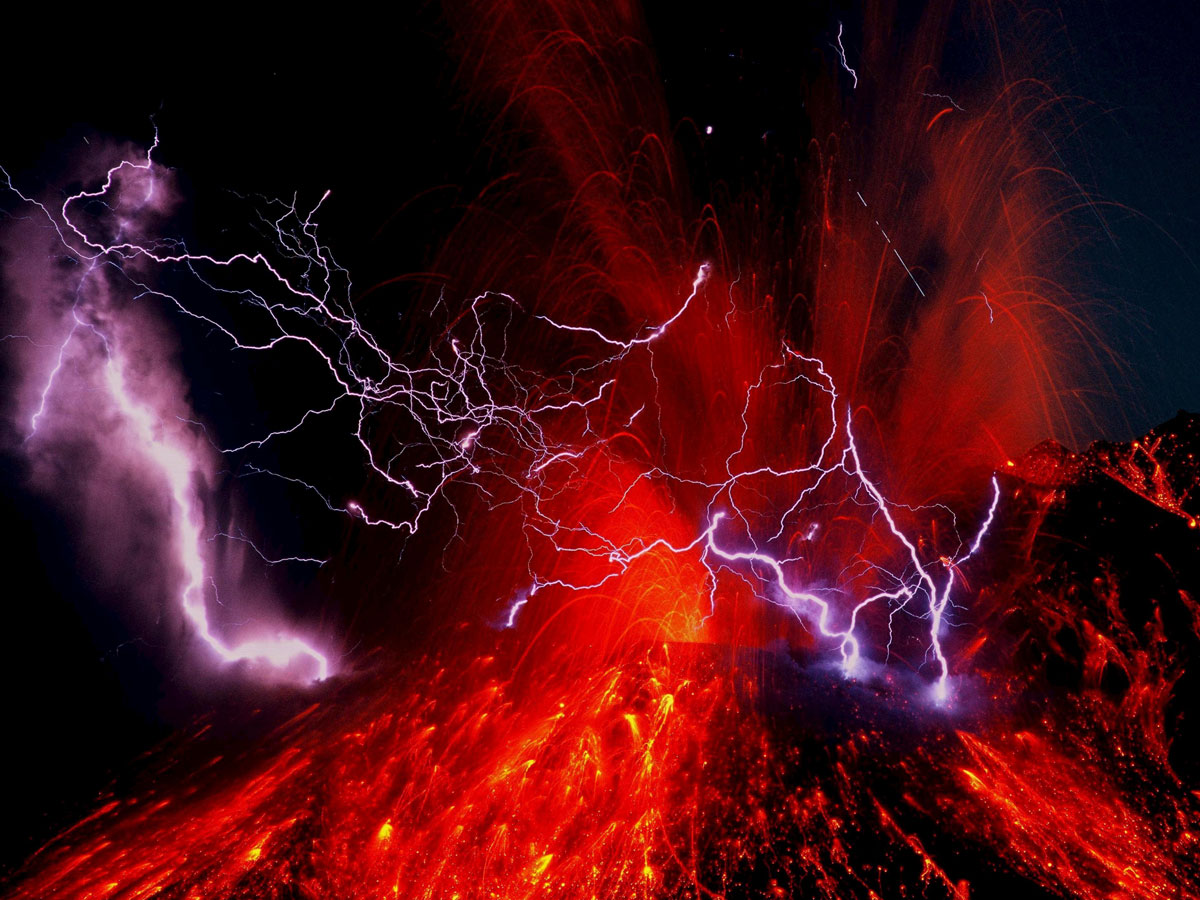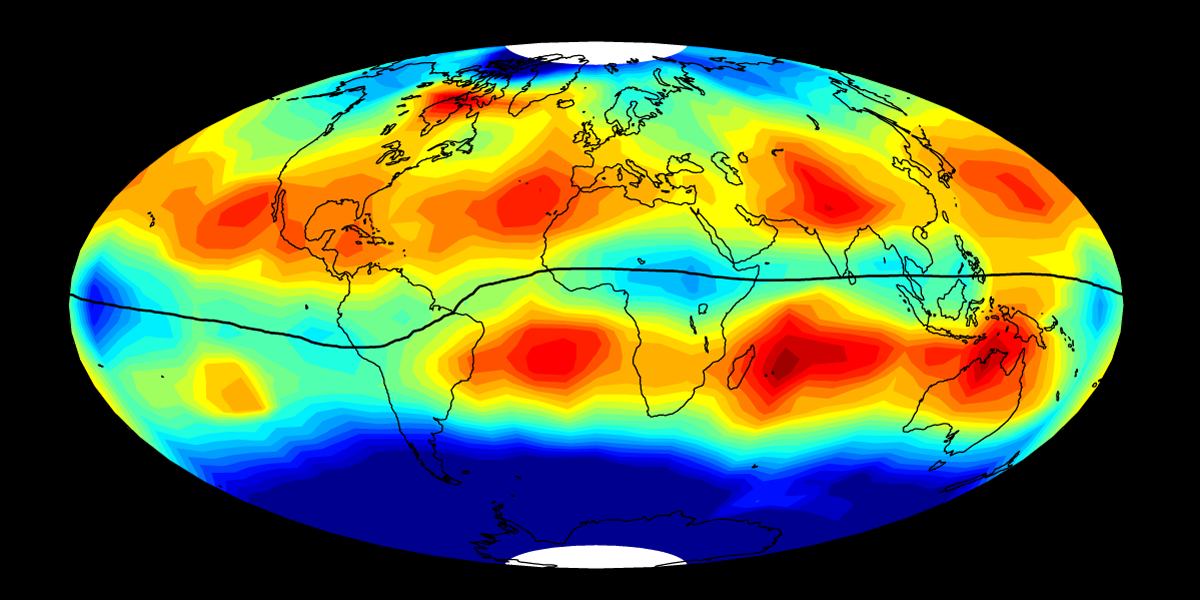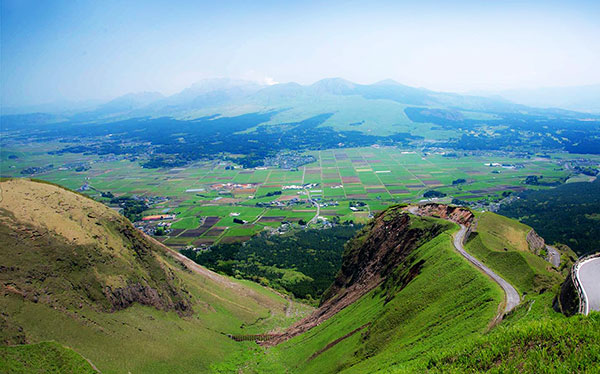
HOME / Departments / Earth and Planetary Sciences
Earth and Planetary Sciences
Research
Our department comprises a multidisciplinary group of more than 40 scientists seeking to determine how the Earth and planetary systems were formed and how they evolve, work, behave and will indeed continue to develop. Current and on-going research programs extend from the geophysics of the Earth's deep interior, through near-surface geological and geochemical studies, to ocean, atmosphere, geomagnetosphere, and solar-planet system sciences. The department also encompasses research into the origin and evolution of life and our planet. Research procedures are diverse: field-based, experimental, observational, computer simulation, analytical, and theoretical. The department maintains active ties with the Institute of Volcanology and Seismology, the International Research Center for Space and Planetary Environmental Science and the Kyushu University Museum.

Education
Undergraduate School
The goal of undergraduate level education is a comprehensive understanding of how the earth and planetary systems were formed, evolved, work, behave and will indeed continue to develop. Faculty members begin by teaching the basic sciences, including physics, chemistry, biology, mathematics and computer science, as well as an introductory earth and planetary sciences course. The faculty then offers an advanced program where students learn the essence of earth and planetary sciences. The teaching program includes geophysics of the Earth's deep interior, near-surface geological and geochemical sciences, ocean, atmosphere, geomagnetosphere, and solar-planet system sciences, and sciences concerning recent environmental changes affecting our planet. The department maintains active educational ties with the Institute of Seismology and Volcanology, the International Research Center for Space and Planetary Environmental Science and the Kyushu University Museum.

Graduate School
In accordance with our admission policy and intended study area we welcome graduate student candidates who have the following abilities and hopes.
- Persons who have acquired grounding for further progression in their research of Earth and planetary sciences.
- Persons who have inquisitive minds seeking to understand the interrelation of natural phenomenon in the origin, evolution, and present state of the Earth and the solar system.
- Persons who have a highly motivated desire to become a research professional by independently determining problems and leading further developments in the field of frontier research, achieving original results about the origin and evolution of the Earth and planets.
- Persons who want to contribute as educators of young people or as professional scientists contributing to the base of a modern technological society, from the standpoint of Earth and planetary sciences.
- Persons who want to play an active role in the international community by taking advantage of the wide-ranging and advanced specialties in the fields of Earth and planetary sciences.

Research Groups
- Solar-Terrestrial Physics
- WATANABE Masakazu, Associate Professor
- Solar-terrestrial physics deals with physical phenomena in geospace caused by electromagnetic waves and interplanetary disturbances radiated from the Sun. Its target area is vast ranging from the Earth's upper atmosphere to interplanetary space and beyond. Our laboratory mainly concerns global plasma dynamics in the solar wind–magnetosphere–ionosphere system and interaction processes between each plasma regime. Research subjects include electric current systems, plasma convection, magnetospheric substorms, magnetospheric dynamos, and magnetic field topology of the magnetosphere. Our approach is integration of observational data analysis and quantitative numerical modeling. The modeling is based on a global magnetohydrodynamic simulation code designed to reproduce ionospheric phenomena with high spatial resolution. We are mostly interested in the polar ionospheres because they serve as a window for global diagnosis of the magnetosphere.
Read More
- Space and Earth Electromagnetism
- YOSHIKAWA Akimasa, Professor
- KAWANO Hideaki, Associate Professor
- The Space and Earth Electromagnetism (SEE) group studies space weather, aurora, electromagnetic fields, and plasma fluctuations in the Sun–Earth system. We have been greatly contributing to the development of the real-time Magnetic Field Data Acquisition System (MAGDAS), consisting of ground magnetometers installed around the world and the system to real-time retrieve data from the magnetometers via the Internet. On the basis of the MAGDAS network data, we are studying the electromagnetically coupled system from the Sun to the Earth. We are also studying simultaneous observations by MAGDAS and satellites in space, which also provide a very powerful approach for understanding the coupled system. We are also developing new methods of data analysis and constructing theoretical framework for understanding the Sun–Earth coupled system.
Read More
- Atmospheric Modeling
- MIYOSHI Yasunobu, Professor
-
Read More
- Atmospheric and Geophysical Fluid Dynamics
- Liu Huixin, Professor
- NAKAJIMA Kensuke, Associate Professor
- NOGUCHI Shunsuke, Assistant Professor
- Our group investigates dynamics of the atmosphere up to about 1000 km height, as well as geophysical fluid of other planets such as Jupitar, Venus, and so on. The atmosphere of that height range consists of the troposphere (~10 km), the stratosphere (10~50 km) including the ozone layer, the mesosphere (50~90 km), and the thermosphere (90 km~) including the ionosphere. There exist various spectacular phenomena associated with different physical properties in each atmospheric region. These phenomena are also to be intimately connected to vertical coupling processes through various kinds of waves, and to clarify their details in terms of theoretical and observational bases is an ongoing important subject. The framework of atmospheric dynamics is further applied to much different phenomena observed in the geophysical fluid of other planets.
Read More
- Meteorology and Climate Dynamics
- KAWAMURA Ryuichi, Professor
- MOCHIZUKI Takashi, Associate Professor
- KAWANO Tetsuya, Assistant Professor
- Xiaoyang Li, Assistant Professor
- Meteorology and Climate Dynamics Laboratory (MCDL) has a long history at Kyushu University, encompassing a broad range of observational, theoretical and numerical-experimental research on dynamic meteorology and climate system. The MCDL highlights fundamental issues of cloud physics, mesoscale and synoptic meteorology, large-scale dynamical processes in the atmosphere, and ocean and climate dynamics. We also pay particular attention to the mechanisms of severe local storm, tropical cyclone and winter storm to contribute to disaster reduction in Monsoon Asia. The following topics are part of recent work from MCDL.
Read More
- Deep Earth Physics
- KANESHIMA Satoshi, Professor
- TAKAHASHI Futoshi, Associate Professor
- Research subjects of our group focus on understanding the structure and dynamics of the deep interior of the Earth, planets and moons based on seismology and electromagnetism. In particular, the center of the Earth called the core is our final frontier, which we cannot see directly. We study the core using observations of the seismic wave and numerical simulations of the magnetic field generation processes (geodynamo). We also study planets and moons such as Mercury, Mars, our Moon, Jovian and Saturnian moons. Investigation of the current internal structure of the bodies helps us understand their evolution histories and clarify their origin.
Read More
- Dynamics of the Earth's Interior
- YOSHIDA Shigeo, Associate Professor
- We investigate fluid dynamical processes inside the Earth through theoretical studies and data analyses. The main topic is core dynamics, including geomagnetic field variations, basic dynamo processes, flow in the inner core, and the formation of the Earth's core. Other research areas include dynamics of volcanic eruptions and hydrothermal circulation.
Read More
- Petrology and Volcanology
- TORAMARU Atsushi, Professor
- IKEDA Takeshi, Associate Professor
- MIYAMOTO Tomoharu, Assistant Professor
- OHASHI Masatoshi, Assistant Professor
-
- Study of dynamics of volcanic eruptions, formation mechanism of rock pattern, vesiculation, crystallization and flow of magmas.
- Study of physico-chemical processes in the deep crust and upper mantle using metamorphic rocks.
- Study of the origin of rocks on the basis of the geochemical theory.
- Earth's Geologic Evolution
- ONOUE Tetsuji, Professor
- KIYOKAWA Shoichi, Associate Professor
- SATO Honami, Assistant Professor
- The aim of the research of this group is to decipher causes and processes of changes in physical, chemical, and biological features on the Earth over billions of years. We make full use of a good deal of analytical machines and methods, our most fundamental research tool is, however, fieldwork, not only to collect samples, but also to understand geological property of targeted areas and rocks. Also, we need the time axis. It is crucially important to know the timing and tempo of geologic changes and evolution.
Targeted areas are in various parts of the world and range in age from the Archean to the present. Our objectives are mainly varying types of sedimentary rocks and their sequences. Our research is based on the stratigraphy, sedimentology, paleontology, and structural geology as well as the geochemistry and geochronology.
Read More
- Paleoenvironmental Science
- OKAZAKI Yusuke, Associate Professor
- We study the Earth’s climate and environmental changes in the past during the glacial-interglacial cycles for the past 800 kyrs based on paleo-proxies preserved in marine sediments. To obtain marine sediment samples, we participate in the research cruises. Microfossil assemblages and geochemical data provide clues to decode past climate changes. We mainly focus on the following topics: (1) changes in the ocean circulation of the glacial-deglacial North Pacific; (2) abrupt climate changes during the past warm interglacials.
Read More
- Observational Seismology and Volcanology
- MATSUMOTO Satoshi, Professor
- AIZAWA Koki, Associate Professor
- EMOTO Kentaro, Associate Professor
- Our group is studying on earthquakes and volcanic eruptions based on mainly geophysical observations, especially seismic, geodetic and electromagnetic observations. The final goal of our study is the prediction of earthquakes and volcanic eruptions by understanding the physical process of preparation of earthquakes and volcanic eruptions. We have revealed the seismic activity and stress-strain field in the crust including active faults and volcanoes. We have also investigated seismological structure, electrical resistivity structure and their space-time changes. Our center for the observation is the Institute of Seismology and Volcanology, located at Shimabara City on the foot of Unzen Volcano.
Read More
- Geohazard Mitigation Science
- MATSUSHIMA Takeshi, Professor
-
Read More
- Formation and Evolution of Planetary Systems
- MACHIDA Masahiro, Professor
- OKAZAKI Ryuji, Associate Professor
- YAMAMOTO Daiki, Assistant professor
- Our group studies various subjects in the frontiers of the formation and evolution of the solar system and extra-solar planetary systems by means of theoretical physics, numerical simulation, analysis of extraterrestrial materials, and experimental simulation in the laboratory. These include: Theoretical study on the formation of stars and planets in molecular cloud cores; Theoretical studies on the motion of dust particles and gas in protoplanetary disks, and formation of planetesimals; Planetary material science based on elemental and isotopic compositions of extraterrestrial material; experimental study on the formation and evolution of extraterrestrial materials.
Read More
- Organic Geochemistry and Cosmochemistry
- NARAOKA Hiroshi, Professor
- YAMAUCHI Noriaki, Associate Professor
- KITAJIMA Fumio, Assistant Professor
- Biological activities have important roles on the evolution of the Earth. We study organic molecules for the better understanding of environmental changes and microbial activities on the Earth and of chemical evolution and origins of life in the universe. Our current research projects include 1) characterization of organic matter in meteorites and returned samples by spacecrafts, 2) molecular study on bacterial and archaeal biomarkers, 3) isotopic study on biomarkers in samples from deep-sea drilling cores and hydrothermal vents, 4) simulation experiments of organic compound formation to clarify their reaction mechanisms and isotope fractionations, 5) development of analytical techniques for trace amount of organic matter in natural samples.
Keywords: Biomarker, Archaea, Origin of Life, Chemical Evolution, Meteorite
Read More
- Earth System Chemistry
- YAMAMOTO Junji, Professor
- Do you know that meteorites and asteroids remain in the Earth's deep interior? Our laboratory is exploring the chemical signatures of meteorites and asteroids from the Earth's mantle to clarify how the Earth came to be.
My (Junji Yamamoto's) goal is to solve one of the greatest mysteries, "how the Earth was born," using natural samples in the Earth. The reason why I am focused on the Earth's materials is that the best record of the Earth is the Earth itself. However, looking around the Earth's surface, there is no place where we can see the Earth in its original state of formation. There must be regions deep within the Earth that have been asleep since the beginning of the Earth's formation. The Earth is one of the planets. Understanding the formation of the Earth will therefore provide crucial constraints on the solar system formation model.Read More
- Deep Earth Materials Science
- KUBO Tomoaki, Professor
- TSUBOKAWA Yumiko, Assistant Professor
- Studies on the properties of the Earth and planetary constituent minerals provide the certain proof of the elementary process operated in the evolution of the planets. Our group focus the dynamic properties (rheology, faulting, diffusion and reaction kinetics) under high pressure. Multi-anvil system and diamond anvil cell are used to generate the high pressure and temperature conditions of the planetary interiors. Synchrotron X-ray sources at Spring-8 and KEK are essential to in-situ observation method. The former and future research topics are given below.
Read More
- Paleontology and Mineral History
- MAEDA Haruyoshi‡, Professor
- ITO Yasuhiro‡, Associate Professor
- ‡ The Kyushu University Museum
- Our laboratory aims at frontier researches on paleontology and mineral history. In paleontology laboratory, our current goal is settled to elucidate fossilization mechanism in geologic time scale, i.e., taphonomy. Our research starts from a very primitive question “How and why were fossils made?” But it provides an essential bridgehead for all fields of paleontology, and gives rise to innovation in sciences about the history of life. From this unique viewpoint, our laboratory leads this field in Japan, and the chief is now active as the president of the Palaeontological Society of Japan.
Besides, detailed analyses on meteorites have been carried out in the mineral history laboratory, while it is temporary closed because of retirement of the faculty.
Read More